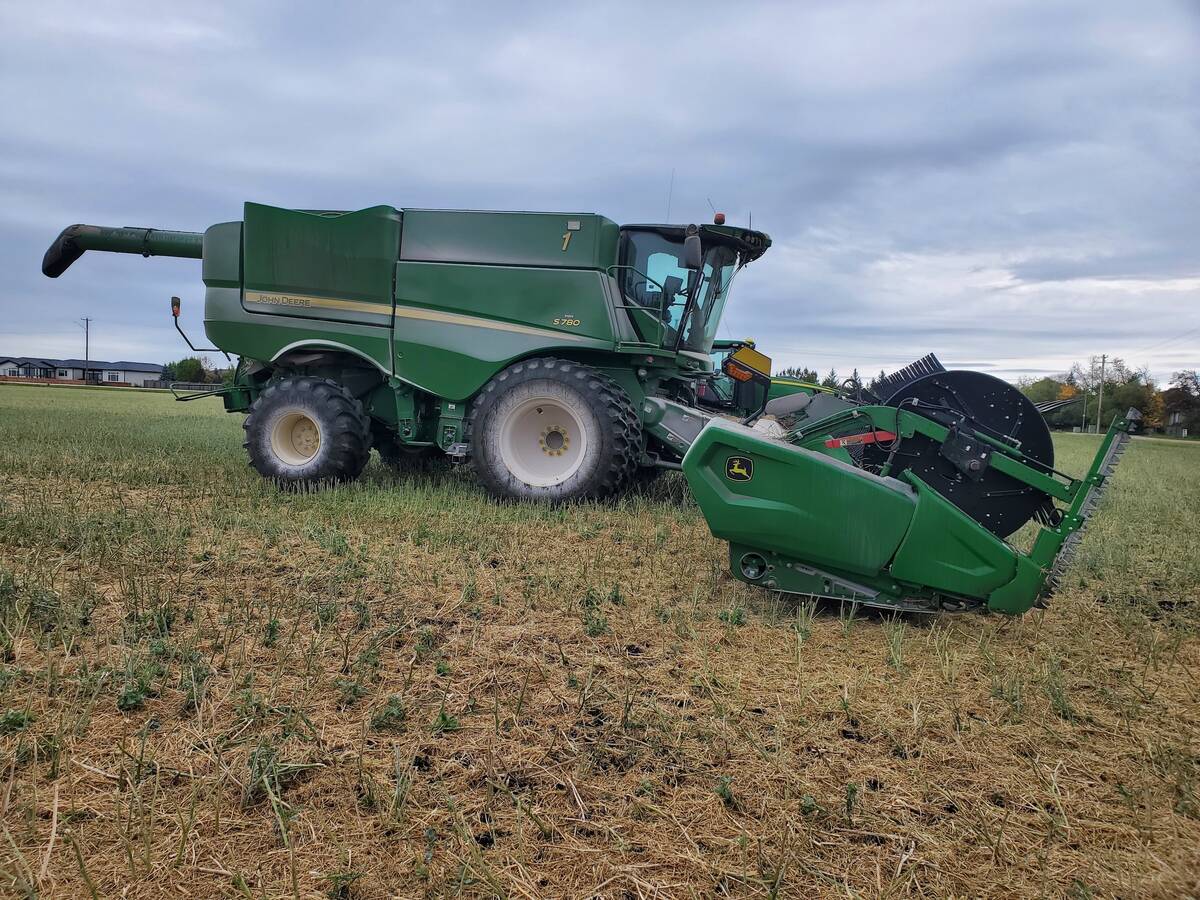Four Saskatchewan organizations are calling on the province to change the way it is handling the transition of former federal pastures.
The Agricultural Producers Association of Saskatchewan, the Community Pasture Patrons Association of Saskatchewan, Public Pastures — Public Interest and Saskatchewan Wildlife Federation paid for Dave Phillips of Frogworks Consultants to conduct a study, which was released Feb. 10 at the patrons association’s annual meeting in Davidson.
The study said Saskatchewan has rejected a provincial association and favours working with individual pastures rather than working for the collective good.
Read Also

Powdery mildew can be combine fire risk
Dust from powdery mildew can cause fires in combines.
“The approach Saskatchewan is using to manage this transition has exposed the province and pasture patron groups to higher total costs for business entity designs, administration systems and range management plans,” said the executive summary.
It said the province’s policies are aimed at making money and offloading environmental responsibilities.
APAS president Norm Hall said patrons are required to pay full fees but also have to provide reports on species at risk and noxious weeds, as well as provide full land access.
“With a private lease, you pay the rate and have full control,” he said.
The study said the government should discount annual fees to the pasture associations by 50 percent to reflect the cost of maintaining the public good and providing the reports.
It said half the patrons in the first 10 pastures to transition have left the business rather than move to the patron-operated model. The government should report on the implications of that, it added.
The study said the pastures should remain in public hands. The lands are available for sale under the crown land sale process, but none have been sold to date.
The organizations want the province to compile an inventory of native cover within the pastures to establish a base line, explain how it will monitor and sustain ecological integrity and report publicly on the condition of wildlife habitat once every six years.
The study said Agriculture Canada used to do this work.
“There are no apparent performance measures in place by which to assess the validity of the Saskatchewan government’s claim that ranchers are the best stewards of grass resources,” the study said.
It also asks the provincial government to fund the patrons association through its pasture transition program.
SWF president David Pezderic said the federal model was ideal for ranchers and conservationists.
“In our view, we failed that continuum,” he told the patrons association meeting.
Karen Aulie, assistant deputy minister of programs at Saskatchewan Agriculture, said the ministry has seen the study but planned on staying the course.
The government wants all of its crown lessees to use the same formula, so a rate discount or freeze as pastures transition to patron control is not likely. Association members asked for such a move in a later resolution at the meeting.
“As we bring that land into our system, it’s not going into our Saskatchewan Pastures Program,” she said.
“It’s really being considered like other crown land that we have available for lease. We want consistency.”
The ecological reporting requirement exists for the more than 100 grazing co-operatives in the province as well as the transitioning pastures, she said.
“An individual that’s doing a lease, no, they don’t have the same reporting requirements, but they still have the standards,” Aulie said.
A lease could be canceled if the land wasn’t properly maintained.
As for producers’ request for an inventory, Aulie said the province is receiving all of Agriculture Canada’s information on each pasture.
“In addition, we’re going in before the patrons kind of get the key to do a further assessment just to make sure we understand what’s there,” she said.
Land agrologists have been doing a thorough analysis of each pasture. That, along with the federal information and the ongoing information from the patrons, will give the province accurate detailed information about each pasture.
Delegates at the meeting also passed a resolution asking the Agri-Food Council to include representation from the patrons association to the Saskatchewan Cattlemen’s Association.
Bryce Burnett of Swift Current, Sask., said the patrons association has 650 members and represents 40 of the 60 pastures affected by the transition. As a result, it should have a seat at the development commission’s table.
Patrons association members said other provincial livestock organizations have not done a good job of supporting them. Chair Ian McCreary said they have been “at best quiet and at worst hostile.”
Aulie said it is possible for the council to approve the addition of the patrons association to the SCA board, but the request has to come from the SCA.
“It would be for industry to ask for it,” she said.
“If the cattle groups came forward and said they would like us to include (the patrons association) … then it would come up to the Agri-Food Council.”
Incoming SCA president Bill Jameson said he is new to the board and wanted a chance to review the issue before commenting.

















